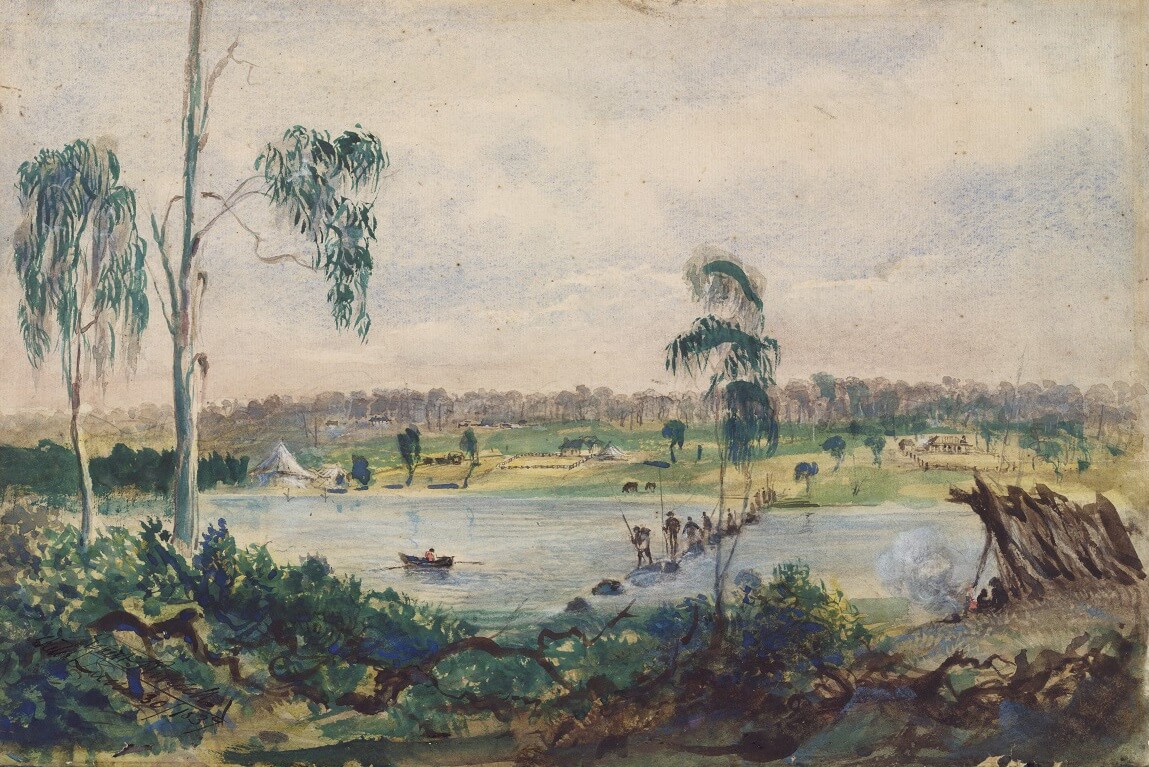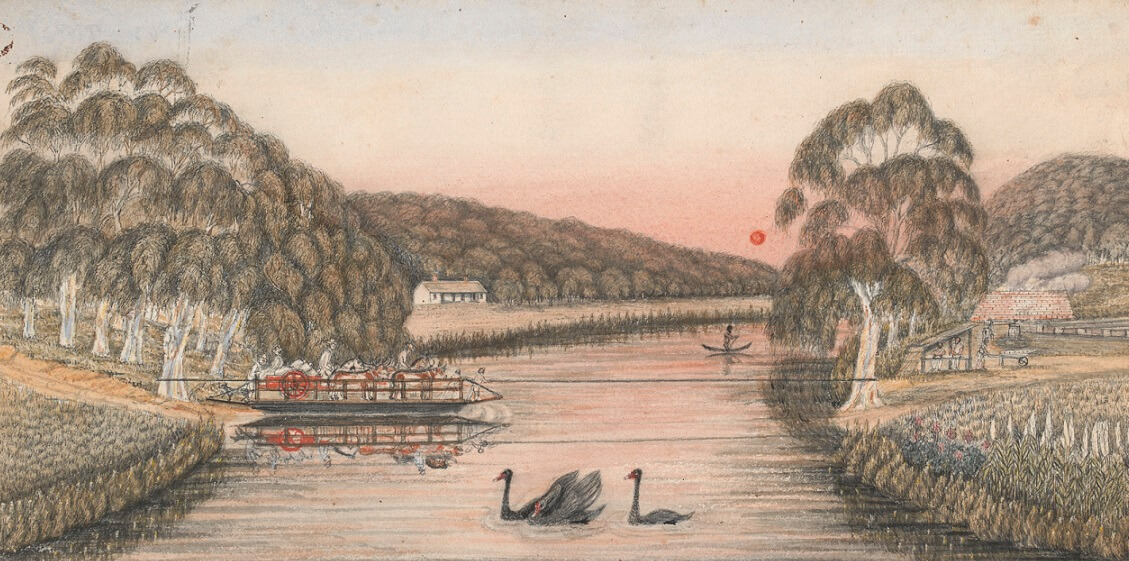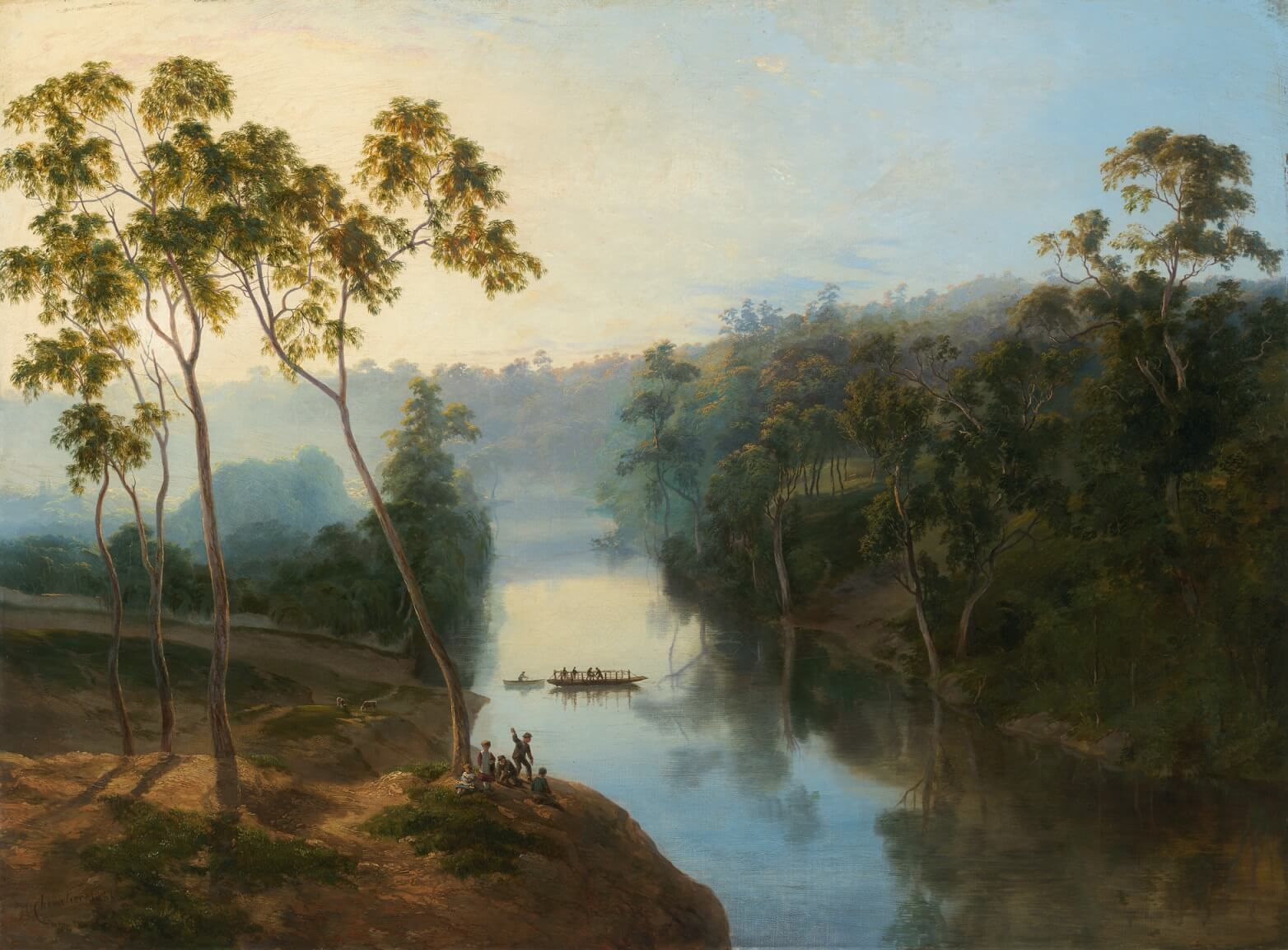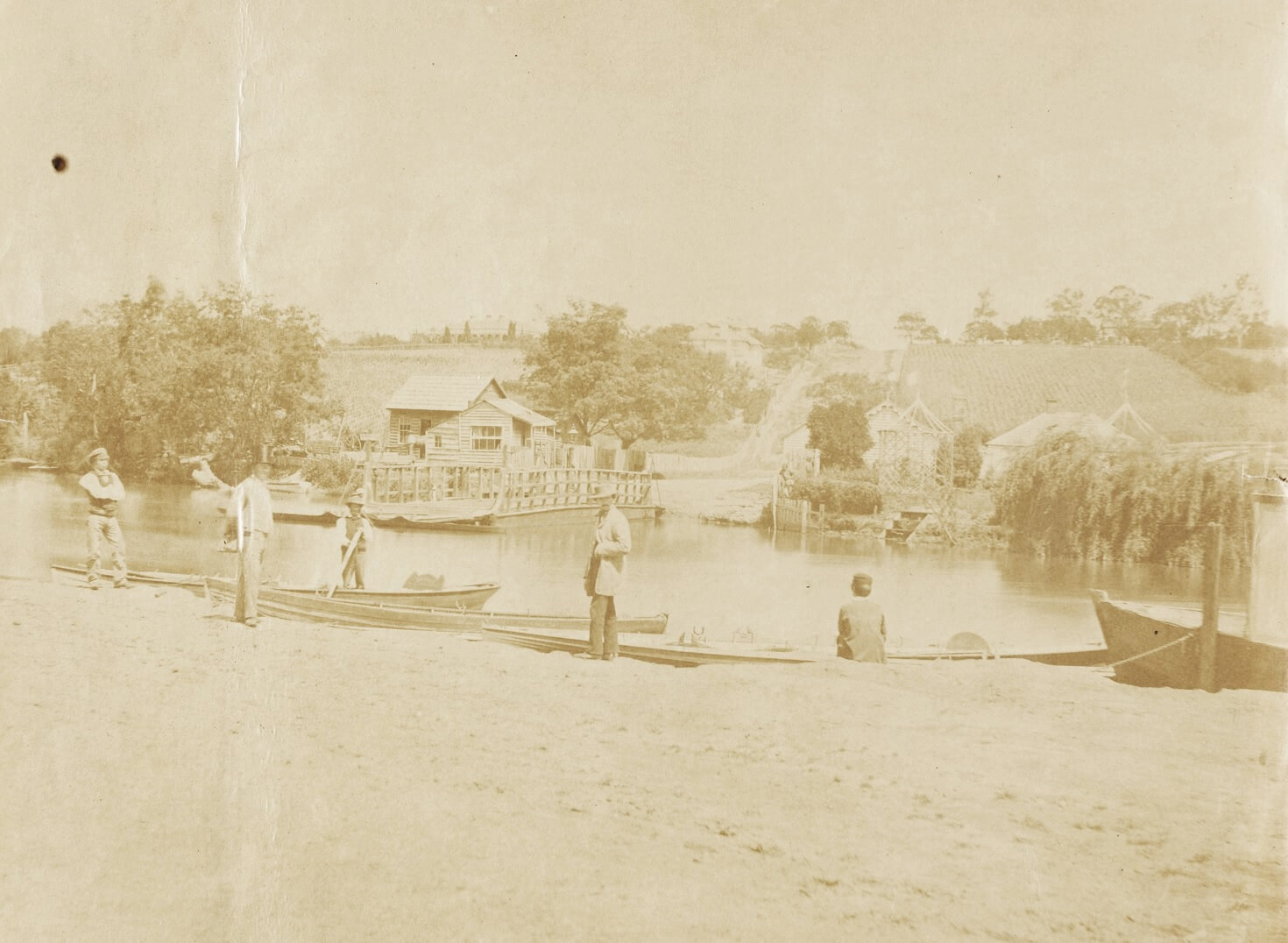Before the first bridges were built, the Yarra was a notable barrier to the passage of people and goods. We know from early pictures and reminiscences of Melbourne that First Nations people crossed the Yarra at the Falls, a rocky barrier that extended across the river just below Princes Bridge. It divided the river in half and provided a barrier to saltwater entering the upper Yarra from the Bay. Below the Falls the river widened into a wide arc, known as the ‘Turning Basin’, so named because ships used the widened river to ‘turn’ and go back out to sea. Larger ships could not navigate the Yarra upstream from the Falls. Several early artists recorded people, including Frist Nations people, using the Falls as a crossing. They included the colony’s first surveyor, Robert Russell, who created a series of lovely watercolours observing the growth of Melbourne from the south bank of the river over a 20-year period from 1837.
Melbourne from the falls, 30 June 1837. Watercolour by Robert Russell
Reproduced courtesy National Library of Australia
Russell’s painting suggests that First Nations people used the Falls as a routine crossing point and perhaps a fishing spot. A hut with campfire is shown on the southern bank of the river overlooking the cleared area that would be Melbourne.
Others crossed the river either in small craft (as shown in several of the pictures reproduced in this section) or by punt. The first punt over the Yarra was operated by William Watt from 1838 at a site just down from the present Princes Bridge. Shown in the image here, it was described by Garryowen (alias of journalist Edmund Finn) in The Chronicles of Early Melbourne as a ‘dray without wheels... launched through the agency of a small rope looped round the main rope across the river’.
The First Punt Across the River Yarra 1838, by W.F.E. Liardet
Reproduced courtesy State Library Victoria
In Liardet’s picture the main rope hauling Watt’s punt is shown secured around trees on the riverbank. Operating the punts was a lucrative enterprise for the owners, but in Watts’ case it was short-lived. His license to operate was withdrawn in 1840 by Police Magistrate William Lonsdale ‘for assembling a number of disorderly characters about his punt and making them drunk’.
Other punts operated upstream. Nicholas Chevalier’s romantic oil on canvas, entitled Studley Park at sunrise, showed the punt operated by John Hodgson from 1856-62 connecting the suburbs of Collingwood and Kew. Nicholas Chevalier arrived in Victoria in 1855. In addition to his painting, he drew for the Melbourne Punch and is credited with introducing chromo-lithography to Victoria.
Nicholas Chevalier Studley Park at sunrise, 1861
Reproduced courtesy National Gallery of Australia
Punt on the Yarra River at Punt Road, Richmond, looking towards South Yarra, 1861
Reproduced courtesy State Library Victoria
This view shows the premises of John Twomay, punt keeper, on the east side of Punt Road South Yarra, and on the west side a summer house, the toll gate and beyond this the vineyard belonging to David Ogilvie.




